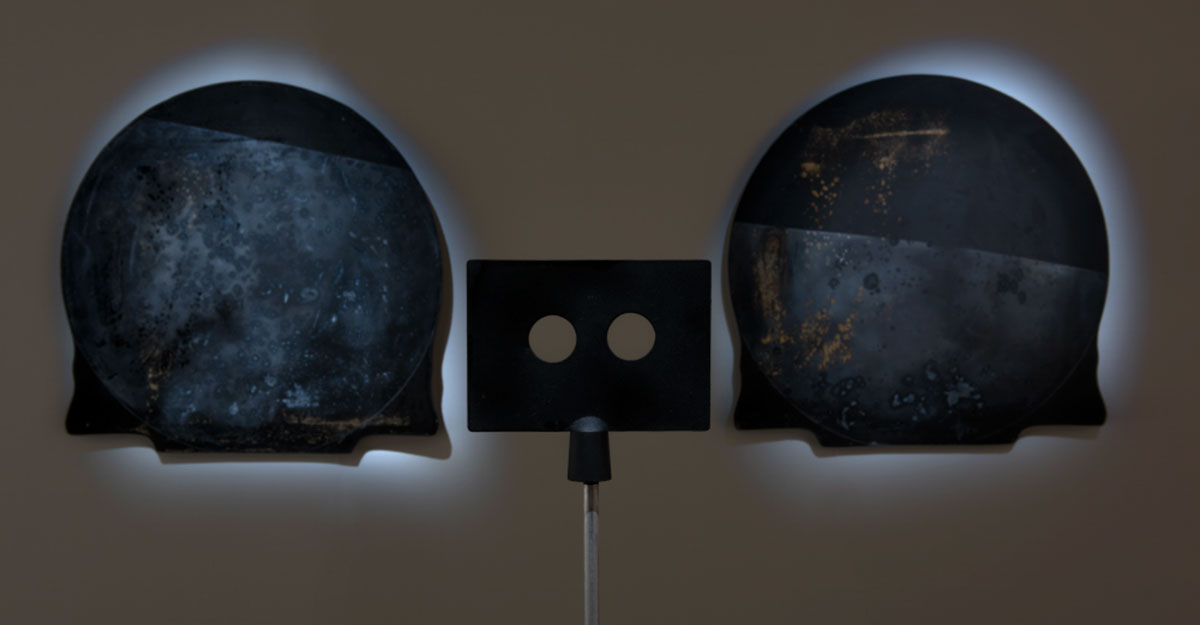TERROIR Q&A SERIES: DENISE DUMAS

We hope that you have a chance to get out to the Gallery and experience Terroir again, or for the first time and remember the gorgeous exhibition publication is now available for sale at the Gallery Shop.
Terroir: a Nova Scotia Survey looks at regional artistic production through the work of 29 artists whose practices draw influence from this place, its history and its culture, in new and meaningful ways. This group exhibition, a partial picture of what’s going on here at this moment in time, includes an exciting range of experienced and emerging artists, making for a dynamic and engaging exploration of Nova Scotia’s rich contemporary visual arts community. What is your connection to Nova Scotia, and why were you inspired to submit a work for this exhibition?
For the past 25 years I have been spending my summer vacations in Cape Breton. The proximity of the ocean is an inspiration, and this translates into my art in different ways. I was forwarded the open call for Terroir after I submitted an exhibition project to the Art Gallery of Nova Scotia; I see that as synchronicity, it was due to happen.
Can you tell us a little about your work that is on view?
In the past years I have used the image of the sea as a metaphor to visually translate different aspects of our human experience. For the installation on view, I wanted to evoke the idea of a world out of balance, and suggest that we should be attentive, stop, look, and reflect.
Portholes/Portals is based on a childhood memory of a sea storm observed from the two portholes of our cabin when crossing the Atlantic from Halifax to Liverpool. In my imagination the black sea represents insecurity and fear. Whether evoking the phenomenon of mass migration, a sick planet, or the growing polarization in our world leading to extremism, I use the image of the black sea to evoke turbulent times.

Your work is on view along with 28 other artists. How do you see your work within the context of this group exhibition?
With globalization my work reflects preoccupations that other artists share. Since I moved from Quebec to the United States, I feel more pressured in life in general. The socio-political situation is always very present on this side of the border, and the divide over beliefs, facts, and ideologies is very disturbing. This transpires in my art, although I am always looking for the “poetic filter” to render those feelings, which might be a Canadian quality. I think we have it pretty good in Canada; that’s why it is so good to have a place in Nova Scotia. The comparison between the two places is one of scale, in Nova Scotia nature is dominant, it encourages reflection; that’s a good place to be.
What are you working on in now, or planning for the near future?
My childhood experience of a sea storm is still informing the body of work I am focusing on right now. I am working on an immersive video installation where I want the spectator to physically feel unbalanced within the gallery space. I am also planning to explore how a memory is being transformed, and looses some of its “truth” each time it is remembered or told. For this I intend to use the containers I use to film the video of the black sea (for the installation), and develop them further into sculptures. So I intend to use black water as a material, as well as a metaphor, to visually translate some realities we face in our trouble times. I plan to combine sculpture, video and refracted light to create a path where one element echoes the others; that’s a departure point.
How has your artistic process developed over time? What informs your practice?
My creative process is based on transformation, and my work develops in an empirical way where one thing provokes another: an idea, a gesture, synchronicity, or an accident, determines what follows. Within that framework, the individual explorations in my artwork change over time and the vehicle I create to carry those ideas takes whatever form or symbol the ideas demand.
I started using the installation format in the mid-eighties as I realized it was offering me a larger range of possibilities to explore with different disciplines and media. I introduced video in my more sculptural practice more than a decade ago, and this led more recently to explore with refracted light. One thing inspires another…
But, whether I address a socio-political, economical, environmental, or personal issue, through my practice, I explore how creativity is important to maintain a stable and coherent sense of identity.

